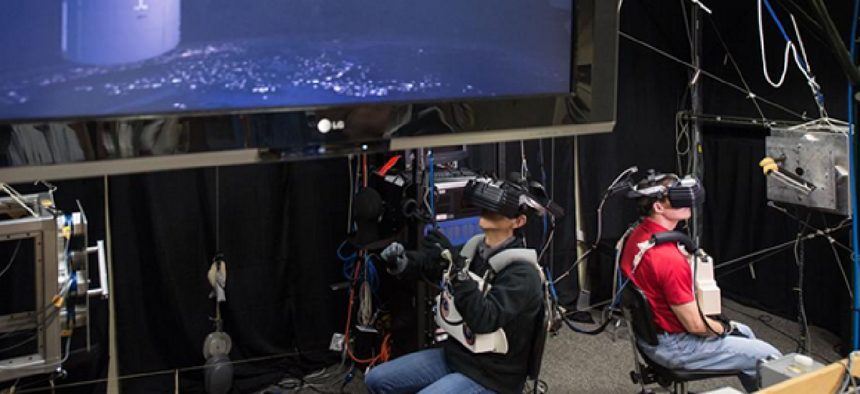Virtual training: Next best thing to being there


Connecting state and local government leaders
NASA uses virtual reality training to prep astronauts for space, and the Marines reimagine their live training environments with augmented reality.
When NASA astronauts go into space for the first time, they see and feel things that most people will never get to experience. For the astronauts themselves, however, it's familiar -- thanks to the virtual reality training they receive to prepare for liftoff.
VR has been used at NASA since the 1990s, said Evelyn Miralles, lead VR innovator for the virtual reality laboratory at the Johnson Space Center, according to a report in TechRepublic, which covered her address at the recent Silicon Valley Virtual Reality Expo.
While still on Earth, NASA uses VR to prepare astronauts for space walks and to train them to how to navigate back if they became untethered. Astronauts also learn how to control the space station’s robotic arm and manipulate payloads in zero gravity. The training continues even after astronauts in space, but since NASA can’t easily put a full VR system into orbit, Miralles and her team hooked a laptop and webcam into a makeshift head-mounted display, Tech Republic reported.
The Marines meanwhile, are training with augmented reality, in which virtual images are superimposed onto the live training environment.
Using glasses or “optical see-through” components that were fitted to the Augmented Immersive Team Trainer (AITT), Marines saw a golf course turned into a battleground complete with tanks, mortar fire and smoke, according to a release from the Office of Naval Research.
Augmented reality can support a wide range of live, virtual and constructive training scenarios. “The glasses are leading-edge and are really pushing the technology of optical see-throughs forward,” said Peter Squire, a program officer with ONR’s Expeditionary Maneuver Warfare and Combating Terrorism Department. “But the glasses are just one component of the system. It’s the AITT system itself that’s revolutionary because it enables warfighters to turn any environment into a training ground.”
The AITT program will wrap up this fall with a final large-scale demonstration at Quantico, Va.




